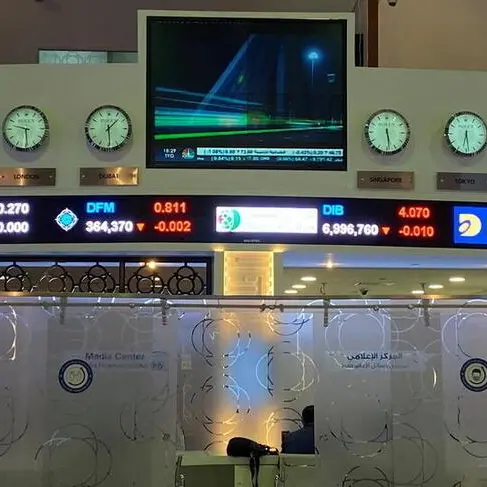PHOTO
Luba Nikulina, Global Head of Manager Research at Willis Towers Watson, discusses the progress of the alternative asset management, which has reached $6.2 trillion
Diversity and yield have been the main drivers of demand for alternatives, as institutional investors increasingly search outside of traditional bonds and equities both to improve the return elements of portfolios whilst minimising their risk profile. Going forward, volatile market conditions and uncertainty are only likely to increase this shift.
A research report by Willis Towers Watson has recently found that total assets managed by the top 100 alternative investment managers globally, reached $3.6 trillion up three per cent from the previous year. Covering ten asset classes and seven investor types, the Global Alternatives Survey, which shows that of the top 100 alternative investment managers, real estate managers have the largest share of assets (34 per cent and over $1.2 trillion), followed by hedge funds (21 per cent and $755 billion), private equity fund managers (18 per cent and $640 billion), private equity funds of funds (PEFoFs) (12 per cent and $420 billion), funds of hedge funds (FoHFs) (six per cent and $222 billion), infrastructure (five per cent) and illiquid credit (five per cent).
Data from the broader survey (all 602 entries) shows that total global alternative assets under management (AuM) is now $6.2 trillion. The research shows, for the first time, the level of assets in insurance-linked investments is around $30 billion, of which almost two-thirds is invested in Europe, by 13 asset managers.
Luba Nikulina, Global Head of Manager Research at Willis Towers Watson, said, “We have seen an evolutionary step in institutional investors’ understanding of the extent that alternatives can fulfil this dual purpose, with many adopting more sophisticated strategies in order to capture specific return factors rather than simply diversifying by asset class alone. This is being reflected in the breadth and depth of product choices available to institutional investors, whether in the proliferation of alternative beta strategies, or in secure income strategies which satisfy their desire for both diversity and yield. Illiquid credit is a further method for institutional investors to diversify return drivers and improve overall portfolio effectiveness, whilst also adhering to a low risk yet return seeking profile.”
The research—which includes data on a diverse range of institutional investor types—shows that pension fund assets represent a third (34 per cent) of the top 100 alternative managers’ assets, followed by wealth managers (19 per cent), insurance companies (10 per cent), sovereign wealth funds (six per cent), banks (two per cent), funds of funds (two per cent) and endowments & foundations (two per cent).
According to the paper, among the top 100 managers, North America continues to be the largest destination for investment in alternative assets (50 per cent), with illiquid credit and infrastructure being the only asset classes where more capital is invested in Europe. Overall, 37 per cent of alternative assets are invested in Europe and eight per cent in Asia Pacific, with five per cent being invested in the rest of the world.
Pension fund assets, managed by the top 100 asset managers by pension funds, increased again from the year before to reach almost $1.5 trillion. Real estate managers continue to have the largest share of pension fund assets with 40 per cent, followed by PEFoFs (20 per cent), hedge funds (10 per cent), private equity (nine per cent), infrastructure (eight per cent), FoHFs (seven per cent) and illiquid credit (four per cent).
Nikulina pointed out that there is an increasing profusion of choice for institutional investors wishing to diversify their portfolios. A typical example of this is the increasing number of ‘alternative beta’ strategies—such as reinsurance, carry, value, momentum, merger arbitrage—outside of the traditional hedge fund structure available for significantly lower fees and with much better alignment. There is continued interest and more options available in real estate, infrastructure and other real assets, particularly in secure income strategies where investors are searching for both yield and diversity as an alternative to traditional hedging with government debt securities. Illiquid credit, governance permitting, is another alternative way of diversifying sources of return and improving overall portfolio efficiency as part of both low risk and return-seeking portfolios.
The survey shows that at the end of 2015, the top 25 alternative asset managers of wealth management assets managed $476 billion (up four per cent), followed by the top 25 managers of insurance company assets ($304 billion—up one per cent); the top 25 managers of sovereign wealth fund assets ($173 billion—up eight per cent); the top 25 managers of bank assets ($100 billion—down 10 per cent); the top 25 managers of fund of funds assets ($89 billion—down 10 per cent); and the top 25 managers of endowment and foundation assets ($87 billion—up eight per cent).
The shift away from equities and bonds into alternatives is believed to have gained momentum among most institutional investors around the world, as these strategies have helped to manage risk through diversity. Persistent economic uncertainty coupled with highly volatile conditions is likely to reinforce this trend.
“Whilst performance has been encouraging and a primary reason for continued growth in alternative assets, a continued area for development is ensuring that managers can demonstrate to asset owners an alignment of interests when it comes to costs. Managers that are best able to provide evidence of this, alongside a track record of innovation and stable performance in a volatile macro climate, are likely to fare well,” added Nikulina.
According to the research, Macquarie Group is the largest infrastructure manager with over $95 billion and tops the overall rankings, while Blackstone is the largest private equity manager with over $94 billion and the largest real estate manager with also almost $94 billion. In the ranking Bridgewater Associates is the largest hedge fund manager with $88 billion and Blackstone is the largest FoHF manager with almost $68 billion. Goldman Sachs is the largest PEFoF manager with almost $45 billion and M&G Investments is the largest illiquid credit manager with over $33 billion. PIMCO is the largest commodities manager with $10 billion, the largest manager of real assets is TIAA with over $7 billion and LGT Capital Partners is the largest manager of
insurance-linked investments.
© Banker Middle East 2016












